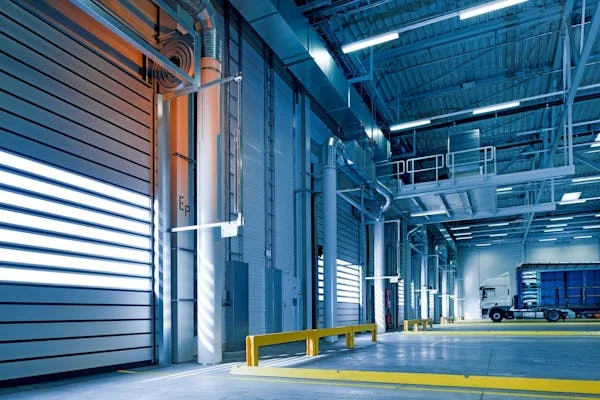Introduction
Understanding and effectively utilizing control systems like PID:22048101 is crucial for enhancing industrial processes. This guide delves into the intricacies of PID:22048101, exploring its features, benefits, applications, implementation strategies, and more.
What is PID Control?
Definition of PID Control
PID control stands for Proportional-Integral-Derivative control. It is a widely used control loop feedback mechanism that helps regulate processes in various industries by continuously calculating an error value. This error is the difference between a desired setpoint and a measured process variable, and the PID controller aims to minimize this error over time.
Components of PID Control
- Proportional Component (P): Adjusts the control output proportionally to the error. If the error increases, the proportional output increases, making this component responsible for the immediate response.
- Integral Component (I): Addresses accumulated past errors to eliminate residual steady-state error. It sums up past errors and applies a correction based on the history of the error.
- Derivative Component (D): Predicts future error based on its rate of change, providing a dampening effect. This component helps to anticipate the error trend and counteracts overshooting or oscillations.
Overview of PID:22048101
Unique Identifier Explained
PID:22048101 serves as a unique identifier for a specific PID controller model, often used in industrial automation for precise control over complex processes. This identifier helps distinguish it from other models, making it easier for industries to select the appropriate controller for their needs.
Specifications and Design
- Compact Design: PID:22048101 is designed to fit seamlessly into various industrial setups, conserving space while delivering high performance.
- Advanced Algorithms: Its control algorithms are fine-tuned to offer enhanced accuracy and stability, reducing the likelihood of overshoot or oscillations.
- User-Friendly Interface: The controller comes with an intuitive interface, making it easier for operators to set parameters, monitor performance, and adjust settings as needed.
Key Features of PID:22048101
High Precision Control
PID:22048101 ensures accurate control by maintaining the desired setpoints with minimal deviation. This precision is particularly important in industries where even minor deviations can lead to significant quality issues or safety concerns.
Adaptive Functionality
The controller can adapt to changing system dynamics and external disturbances, ensuring consistent performance even under varying conditions. This adaptability makes PID:22048101 suitable for dynamic environments where process variables frequently change.
Robust and Reliable
Built for long-term reliability, PID:22048101 minimizes downtime and maintenance costs, making it a dependable choice for continuous operations. Its robust construction and advanced features ensure that it can withstand harsh industrial environments.
Applications of PID:22048101 in Different Industries
Manufacturing Sector
In manufacturing, PID:22048101 is employed to regulate machine operations, ensuring uniformity in product quality.
- Temperature Control: Maintains optimal temperatures in processes like welding, molding, and extrusion, critical for producing high-quality products.
- Pressure Regulation: Ensures consistent pressure in hydraulic systems, which is essential for the smooth operation of machinery.
Automotive Industry
PID controllers are integral in automotive systems, offering stability and control in critical functions.
- Fuel Injection Systems: Optimize fuel delivery for improved engine performance and fuel efficiency.
- Braking Systems: Enhance safety by providing controlled braking force, reducing the risk of skidding or accidents.
Aerospace Applications
In aerospace, maintaining precise environmental conditions is essential for both safety and functionality.
- Cabin Pressure Control: Ensures passenger comfort and safety by maintaining a consistent pressure level inside the cabin.
- Temperature Regulation: Maintains optimal operating conditions for sensitive equipment, such as avionics, to prevent malfunctions.
Pharmaceutical Industry
The pharmaceutical sector relies on precise control to maintain the integrity of drug formulations and storage.
- Sterile Environments: Controls humidity and temperature in clean rooms to prevent contamination and ensure product sterility.
- Reactor Control: Ensures consistent conditions for chemical reactions, which is crucial for producing safe and effective pharmaceuticals.
Advantages of Implementing PID:22048101
Improved Product Quality
By maintaining precise control over process variables, PID:22048101 helps ensure products meet stringent quality standards, reducing the likelihood of defects or inconsistencies.
Cost Efficiency
- Energy Savings: Optimizes energy consumption by reducing wastage, leading to lower operational costs.
- Reduced Material Waste: Ensures optimal use of raw materials, lowering production costs and enhancing sustainability efforts.
Enhanced Safety Measures
The controller monitors critical parameters to prevent unsafe conditions, thereby enhancing overall system safety. This capability is especially important in industries like aerospace and pharmaceuticals, where safety is paramount.
Implementation of PID:22048101
Installation Guidelines
Proper installation is crucial for optimal performance. Key steps include:
- Site Assessment: Evaluate the installation environment to ensure it meets the controller’s operational requirements.
- Wiring and Connectivity: Ensure proper electrical connections to avoid malfunctions or safety hazards.
- Configuration: Set up control parameters according to process requirements, ensuring the controller operates within desired limits.
Calibration and Tuning
Calibrating and tuning the PID controller is essential for achieving the desired control performance.
- Manual Tuning: Involves adjusting P, I, and D settings manually based on observed system behavior.
- Auto-Tuning: Some models offer auto-tuning features that automatically adjust parameters for optimal performance.
Maintenance and Troubleshooting
Regular maintenance ensures long-term reliability. Common maintenance tasks include:
- Periodic Inspections: Check for signs of wear and tear, ensuring that all components function correctly.
- Software Updates: Keep the controller’s firmware updated to benefit from the latest improvements and bug fixes.
- Troubleshooting: Address issues promptly to minimize downtime and maintain consistent performance.
Comparison with Other PID Controllers
PID:22048101 vs. Generic PID Controllers
- Customization: PID:22048101 offers more customizable options tailored to specific industry needs, allowing for greater flexibility in various applications.
- Advanced Features: Includes enhanced algorithms for better accuracy and stability, outperforming generic models in dynamic environments.
- User Experience: Provides a more intuitive interface, making it easier for operators to manage and adjust the controller without extensive training.
Case Studies of PID:22048101 Implementation
Case Study 1: Manufacturing Plant
A manufacturing plant implemented PID:22048101 to regulate temperature in their assembly line, resulting in a 15% increase in product quality and a 10% reduction in energy costs. This improvement was attributed to the controller’s ability to maintain consistent temperatures, reducing defects.
Case Study 2: Pharmaceutical Company
A pharmaceutical company used PID:22048101 to control environmental conditions in their clean rooms, ensuring compliance with regulatory standards and reducing product recalls. The precise control of humidity and temperature helped maintain the integrity of sensitive drugs.
Conclusion
PID:22048101 stands out as a robust and versatile tool in industrial automation. Its precise control capabilities, adaptability, and reliability make it indispensable across various industries. By understanding its features, applications, and implementation strategies, businesses can leverage PID:22048101 to enhance efficiency, ensure product quality, and achieve sustainable operations.
Frequently Asked Questions (FAQs)
What is PID:22048101 used for?
PID:22048101 is used for precise control of process variables like temperature, pressure, and flow rate in industrial automation.
How does PID:22048101 improve efficiency?
By maintaining optimal process conditions, it reduces waste and energy consumption, leading to increased efficiency and cost savings.
Can PID:22048101 be used in different industries?
Yes, it is versatile and can be adapted for use in manufacturing, automotive, aerospace, pharmaceuticals, and more.
What are the main components of PID control?
The main components are Proportional, Integral, and Derivative, each playing a role in error correction and control.
Is PID:22048101 easy to install?
Yes, with proper guidelines and support, it is relatively easy to install and configure, making it accessible for various industrial applications.
How often should PID:22048101 be maintained?
Regular maintenance, including periodic inspections and software updates, is recommended to ensure long-term reliability and optimal performance.






